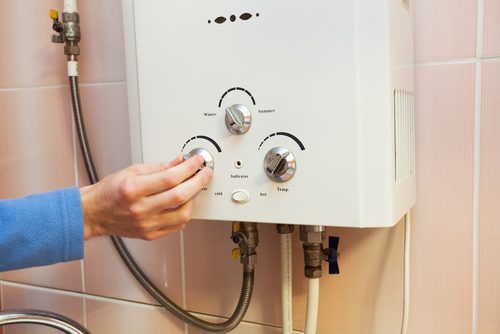Simple Steps to Caring for Your Home's Hot Water SystemWhat to Maintain Your Home's Hot Water System Properly
Simple Steps to Caring for Your Home's Hot Water SystemWhat to Maintain Your Home's Hot Water System Properly
Blog Article
Do you find yourself hunting for details involving Tips on Maintaining a Water Heater?

Warm water is necessary for everyday comfort, whether it's for a refreshing shower or cleaning meals. To ensure your warm water system runs efficiently and lasts much longer, routine maintenance is vital. This post provides sensible ideas and insights on just how to preserve your home's hot water system to prevent disruptions and pricey repair work.
Intro
Maintaining your home's warm water system may appear difficult, yet with a few straightforward actions, you can ensure it operates efficiently for many years to come. This overview covers whatever from recognizing your warm water system to DIY maintenance tips and recognizing when to contact professional aid.
Value of Maintaining Your Warm Water System
Routine maintenance not just extends the life-span of your warm water system but additionally ensures it runs successfully. Ignoring maintenance can cause lowered effectiveness, greater energy costs, and even premature failing of the system.
Signs Your Warm Water System Needs Maintenance
Recognizing when your warm water system needs interest can protect against major problems. Keep an eye out for indications such as irregular water temperature, unusual sounds from the heater, or rustic water.
Purging the Hot Water Heater
Flushing your hot water heater gets rid of sediment buildup, enhancing performance and prolonging its life.
Checking and Changing Anode Rods
Anode poles prevent rust inside the storage tank. Evaluating and replacing them when worn is vital.
Facility Issues Requiring Expert Assistance
Instances consist of major leaks, electrical issues, or if your hot water heater is continually underperforming.
Regular Expert Upkeep Conveniences
Professional maintenance can include extensive assessments, tune-ups, and making certain conformity with safety and security standards.
Inspecting and Adjusting Temperature Settings
Adjusting the temperature settings guarantees optimal performance and safety.
DIY Tips for Maintenance
You can perform several maintenance tasks on your own to maintain your warm water system in leading problem.
Looking for Leakages
Consistently inspect pipes and links for leakages, as these can bring about water damages and greater costs.
Recognizing Your Warm Water System
Prior to diving into maintenance tasks, it's useful to understand the basic components of your warm water system. Commonly, this consists of the hot water heater itself, pipelines, anode rods, and temperature controls.
Monthly Maintenance Tasks
Normal month-to-month checks can assist catch minor issues prior to they rise.
Checking Pressure Relief Valves
Testing the pressure safety valve guarantees it works correctly and prevents too much stress accumulation.
Insulating Pipelines
Protecting hot water pipes lowers warm loss and can save energy.
When to Call a Specialist
While do it yourself maintenance is beneficial, some concerns need expert proficiency.
Verdict
Routine upkeep of your home's hot water system is essential for efficiency, long life, and expense financial savings. By adhering to these ideas and understanding when to seek expert aid, you can make sure a trustworthy supply of hot water without unexpected disruptions.
How to Maintain an Instant Hot Water Heater
Before tinkering with your hot water heater, make sure that it’s not powered on. You also have to turn off the main circuit breaker and shut off the main gas line to prevent accidents. Also turn off the water valves connected to your unit to prevent water from flowing into and out of the appliance. 2. When you’re done, you have to detach the purge valves’ caps. These look like the letter “T” and are situated on either side of the water valves. Doing so will release any pressure that has accumulated inside the valves while at the same time avoid hot water from shooting out and burning your skin. 3. When the purge valves’ caps are removed, you have to connect your hosing lines to the valves. Your unit should have come with three hoses but if it didn’t, you can purchase these things from any hardware or home repair shops. You can also get them from retail stores that sell water heating systems. Read the user’s manual and follow it to complete this task properly. When the hosing lines are connected, open the purge port’s valves. 4. You should never use harsh chemical cleaners or solutions when cleaning your unit. Make use of white vinegar instead. It should be undiluted and you’ll probably use about 2 gallons. 5. Now flush your water heater. This task should probably take about 40 minutes. We can’t give you specific directions for this because the procedure is carried out depending on the type, model and brand of your heater. With that being said, refer to the user’s manual. 6. When you’re done draining the unit, you have to turn off the purge port valves again. Remove the hosing lines that you earlier installed on each of the water valves. Put the valve caps (purge port) back in their respective places and be very careful so as not to damage the rubber discs that are found inside these caps. 7. Now that everything’s back in place, check your user’s manual again to find out how to reactivate your water heating system. 8. Once it is working, turn one of your hot water faucets on just to let air pass through the heater’s water supply pipes. Leave the tap on until water flows smoothly out of it. https://www.orrplumbing.com/blog/2014/september/how-to-maintain-an-instant-hot-water-heater/

I'm certainly very occupied with Water Heater Maintenance Tips You Can't Afford to Forget and I really hope you enjoyed reading the new post. Sharing is caring. You just don't know, you may be helping someone out. We value your readership.
Call Today Report this page